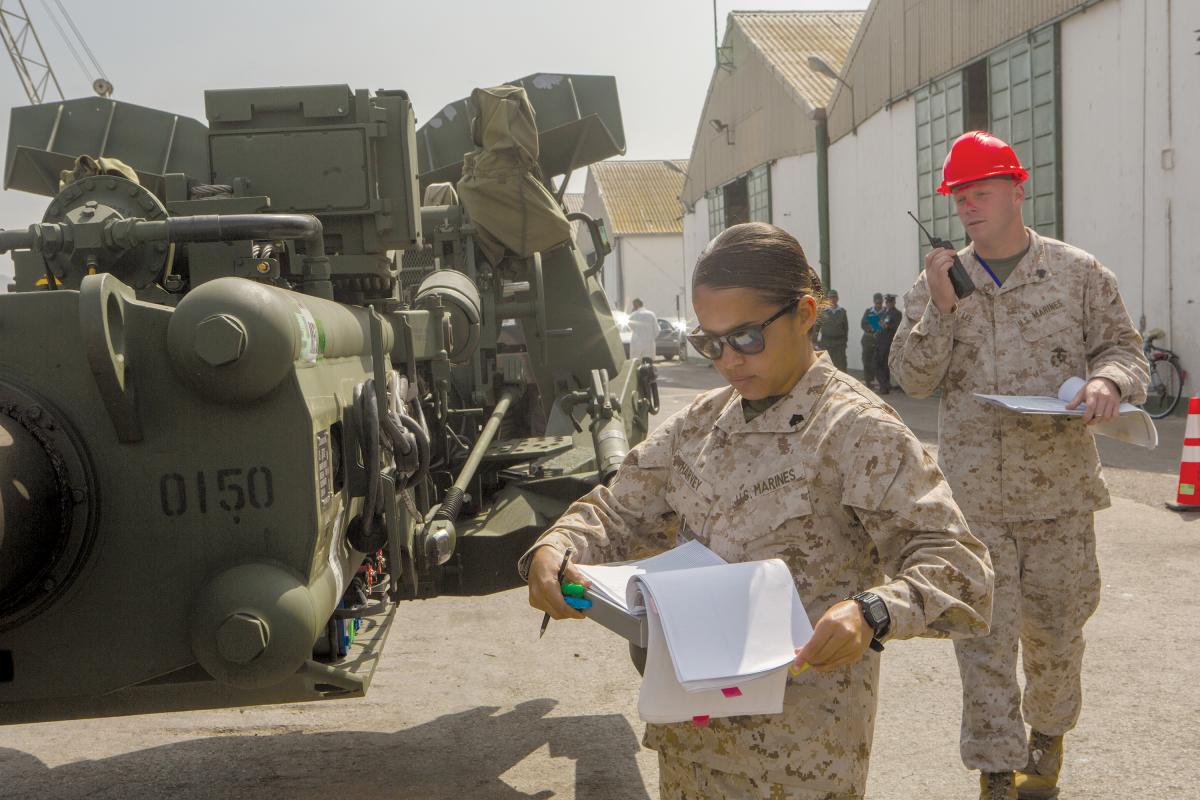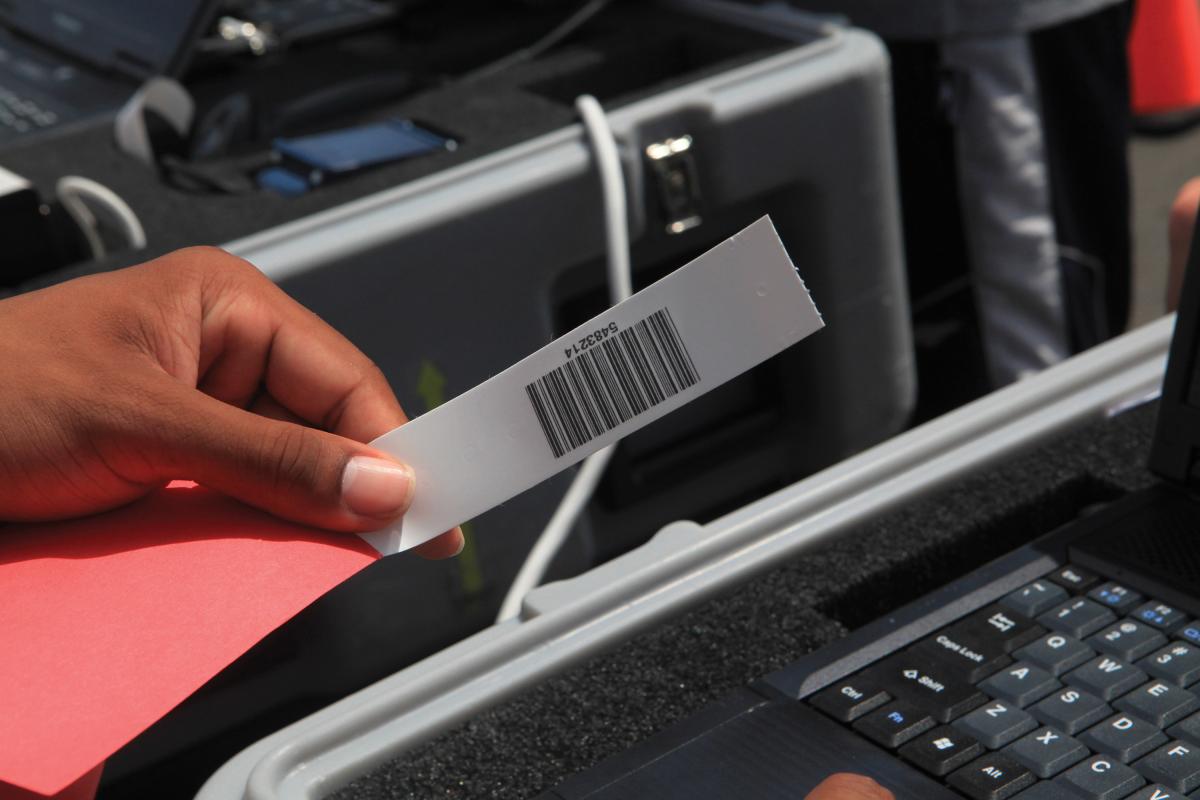As an active-duty Marine, I often find myself busy with inventory-based tasks. Whether for the accountability of weapon systems, radios, or technological assets, taking inventory is time-consuming and often detracts from the functionality of a Marine in his primary duties. The integration of tablet-based hardware with simple database and spreadsheet software would greatly improve productivity.
Such software, when coupled with system-associated barcode scanners, could even further cut time from inventory-based processes. Marines could redirect the time gained to tasks that require more human-based interaction, such as maintenance, debugging software, and improving unit physical fitness.
Paper to Digital Conversion
Often when dealing with lists, Marines find themselves holding large binders or stapled sheets of paper. This is not only a waste of resources, but also an inefficient means for the communication of data. Tablet software could offset paper costs and usage, which could reflect positively on the environment in addition to the Marine Corps budget. This is particularly relevant when the rate at which these data sets change and require reprints is considered.
Efficiency & Human Error
Human error contributes to more than 80 percent of the accidents in technology-reliant venues, ranging from air transport operations to nuclear power plants.1 With the introduction of tablet software and barcode scanners, quick searches and digitally based organizational tools would be readily at a Marine’s disposal. Not only can machines render data more quickly than a human, they also can eliminate a margin of human error associated with such tasks. Of note, informal lists in the military often are constructed without logical organization or consideration for an inventory taker. However, with the implementation of sort functions, the lack of human organization could be remedied on the spot.
Autopopulate Data Fields
Typing repetitive information into military databases such as the Global Combat Support Systems–Marine Corps also wastes time and effort. These keystrokes, though already abbreviated in certain contexts, could be further simplified to meet the needs of shop-specific processes. What is now a series of 15 to 22 keystrokes could be consolidated to the press of a single key. This can be compared to a user filling out data on an online form. If the information is always the same, a file that permits autopopulation can be rendered to save time and increase efficiency, which is the true potential of a batch-based process. This, of course, would require the relevant permissions and credentials in computer programming.
A prime example of optimizable processes is the induction of gear for maintenance, disposal, or calibration. Specific processes, such as creating an induction task, could be formatted into single keystrokes that would populate all fields in a blanket format. This streaming of paperwork and formatting would eliminate structural formatting disagreements that arise after a Marine is fatigued and under high stress from a large workload. While such automation would increase speeds, human involvement still would be necessary to ensure the correct population of fields. Manual entry would be needed on a case-by-case basis, but machine accuracy is far superior to the human construct in many aspects.
Machines entering information don’t make mistakes due to fatigue when high speeds are necessary to meet a workflow requirement. Although machines and information processors sometimes require debugging, their efficiency at data rendering is unrivaled when compared to organic limitations. There are exceptions when a human must be involved, such as when making specific modifications, or maintaining and keeping some form of nondigital log, but expediting these processes would cut time from repetitive administrative tasks and free time for executing more demanding tasks not as readily and accurately executable by software.
The Global Financial Services Industry’s (GFSI) study on human error posited that 87 percent of industry-related errors were from human error. Of this 87 percent, 22 percent were correlated with sabotage, and 65 percent were attributed to non-malicious errors and lapses in employee judgment.2 Malicious intent is registered as the minority of human error. This distribution provides evidence of the shortcomings of the human mind. A functional hard drive surpasses the human mind in data collection and recall.
Real-World Case Study
Linda Ernick explains how the Anne Bridge Baddour Library (ABBL) at Daniel Webster College was able to use barcode scanning to complete an inventory of all items in the school’s library. This inventory was estimated at approximately 33,000 items. A small team armed with a minimal budget—only a laptop and barcode scanner—was able to tackle this large project in fewer than 20 days. This minimalist and budget-friendly inventory tool was written only with the notepad function present on Windows computers and Microsoft Excel. Basic programming functions and algorithms allowed the identification of absent and unaccounted for volumes. The software also was created with the ability to identify incorrect typing of entries.
Of the inventory, 0.68 percent of the total volumes were found to be missing and were attributed to student integrity regarding book return. It should be mentioned that this task was completed amid budget cuts and an overall lack of funding.3
Now, think about the often underwhelming financial resources of the Marine Corps budget. Considering what one financially constrained facility was able to accomplish with minimal software, it seems that a fiscal integration such as this could prove both achievable and useful for the Marine Corps.
Time to Make the Switch
Analog to digital conversion of files could be a positive change for the Marine Corps. Integration would minimize environmental issues, such as paper consumption from human error. Technological integration subtracts time from the inventory process and lends time to the execution of maintenance processes and the perfection of preexisting software. Perhaps most important, such integration would aid in preparing the Marine Corps to ensure it is ready for the next task at hand.
1. Munir Ahmed, Lukman Sharif, Muhammad Kabir, and Maha Al-Maimani, “Human Errors in Information Security,” International Journal of Advanced Trends in Computer Science and Engineering 1, no. 3 (July–August 2012): 82–87.
2. Ahmed, et al., “Human Errors in Information Security.”
3. Linda Ernick, “Floating Bibs and Orphan Bar Codes,” Library Resources & Technical Services 49, no. 3 (2005): 210–16.




